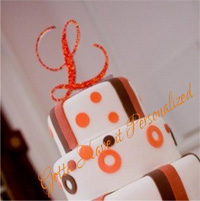The sparkle of a cocktail ring, the shimmering row of stones on a formal dress and the brilliancy of a diamond buckle on a high heel are all examples of rhinestones. Rhinestones are so ubiquitous that many people take them for granted. The stones are versatile enough that they can be universally used in place of jewels, gems and precious stones of all kinds.
Rhinestones are faceted stones that mimic the look and shape of cut and polished diamonds. They can be made from a number of materials. Plastic, glass, acrylic and crystal are all commonly used in the rhinestone manufacturing process. The type of material will generally dictate the quality and appearance of the faux gem. The process of producing rhinestones has become so refined over the years that sometimes they are indistinguishable from diamonds to the naked eye.
The first rhinestones were rock crystals with extreme refractory properties that were pulled from the Rhine River. They were polished and sold as diamond substitutes. This continued for many years until the 1730s when French jeweler Georg Friedrich Strass made the first major improvement to rhinestones. He began coating the back of polished glass with a metal powder that amplified light reflection. The brilliancy of the new rhinestones made them extremely popular. The rhinestone was taken to further levels of beauty with the invention of a glass-cutting machine that turned out brilliant, faceted stones at a fast rate. The inventor of the machine, Daniel European, formed a company that still bears his name.
The European Company was also responsible for the next big innovation in rhinestones. In the mid 1950s, a new metallic coating was introduced by European. The Aurora Borealis finish offered a rhinestone that took the stones to a new level of shine and reflection. The coating, when applied to rhinestones, reflects any color that surrounds it and adds a new dimension to the stone. Because of this treatment, the popularity of cocktail jewelry using rhinestones exploded in the 1950s. Many vintage pieces in use today are relics of this innovation.
The processes that make rhinestones significantly less expensive than purchasing genuine precious stones make the faux stones perfect for everyday use. Rhinestones can be used as an inexpensive alternative to authentic gemstones. Many clothing manufacturers use rhinestones as embellishments because they are far easier and less costly to replace. Rhinestones are also often used to make replicas of real stones. The owner of valuable jewelry can wear the replica in situations that pose a high security risk.
Much like real gemstones, rhinestones come in a wide variety of sizes. In recent years, rhinestones have become popular for use in crafting. They can be found with adhesive backings that make them perfect for use in clothing design, scrapbooking and a number of other crafting activities. Machines are sold specifically for easy and permanent application of rhinestones at home. Many companies sell lines of electronic device cases covered in designs made only of rhinestones.
The care of rhinestones differs from genuine jewels. Moisture, chemicals and abrasive materials should all be kept far away from rhinestones. Avoid getting the stones wet, because this may damage the reflective backing. Chemicals can weaken any adhesive bonds, and abrasive materials scratch the stones. Many jewelers will gladly clean your rhinestones, but it is also easy to do at home. Simply dampen a soft cloth with rubbing alcohol, and gently rub the stone. Be sure that the stone fully dries before storing. Store your rhinestones away from other jewelry that can scratch and damage the surface of the stone. Instead, hang it up or store it alone in a jewelry bag.


